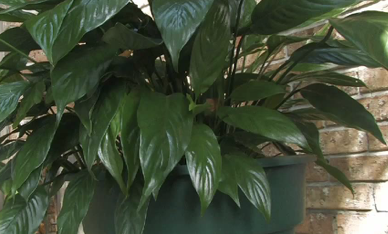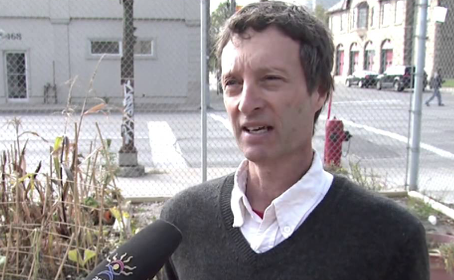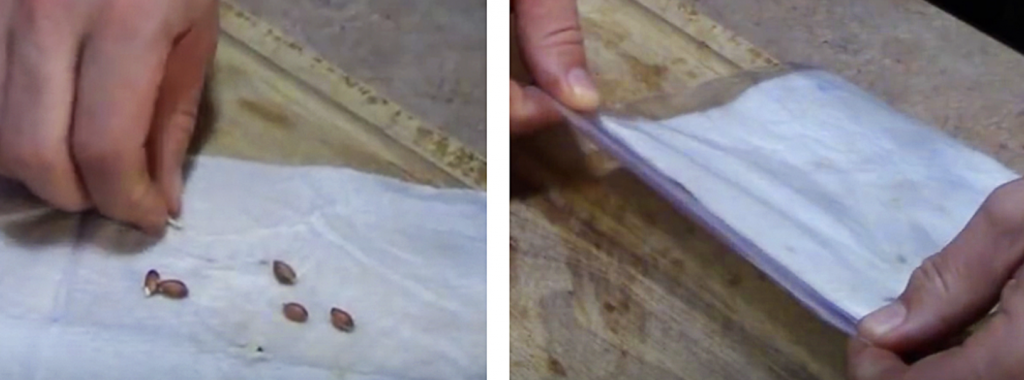3 Toxic Chemicals Are Found In Almost Every Home. But THESE 8 Plants Will Purify The Air You Breathe!

image via – youtube.com
Until I came upon the video you are about to watch below, I had no idea that air pollution that exists inside our homes is far more concentrated and dangerous for us, than outdoor pollution! This indoor pollution, according to the American Lung Association, is often overlooked and is caused by dangerous chemicals that can be found in almost every home.
The three most dangerous chemicals are: formaldehyde, benzene and trichloroethylene. These pollutants are often found in carpets, plastics and cleaning supplies, and exacerbate or cause allergies and asthma. So that’s the bad news. The good news is that a recent study by NASA revealed that there is a natural and esthetically pleasing way to detoxify the air in your home…a select group of POTTED PLANTS!
Some plants that do the trick in getting rid of pollutants are:
SPIDER PLANTS which get rid of formaldehyde; DRACAENA PLANT; FICUS TREES which eliminate benzene in the air; PEACE LILY which eradicates ammonia and other chemicals; RUBBER PLANTS removes carbon monoxide; BOSTON FERNS; POT MUMS and ENGLISH IVY.
These and other common potted plants will be discussed in the upcoming video, and will further explain how important it is for your respiratory health, to keep plants in your indoor environment. Let us know what you think and whether you will add more plants inside your homes.
Do you have these plant inside your house?
Please SHARE this with your family and friends
They Found 850 Year Old Seeds And Decided To Plant Them. What Grew Is An Unexpected Surprise!

Every now and then news accounts carry a story about how some plant, insect, and animal is dying out and fast becoming endangered or extinct. There are never any positive stories about how some previously extinct plant has been re-born or brought back into existence, until now.
This seemingly unbelievable tale first began a few years back, in 2008, when a group of archaeologists were conducting a dig on First Nations (Native) land in Wisconsin. During the course of the dig they came across a small clay ball, no larger than a tennis ball, which had been used to store a few handfuls of seeds.
Those seeds were carbon dated back to 850 years ago and identified as “Gete-okosomin,” a type of squash that had not been grown, eaten, or seen by anyone for hundreds of years. The ancient seeds were given to a Native group, who in turn dispersed them to several groups and individuals, all whose goal was to bring them back to fruition.
Eventually the Canadian Mennonite University came to possess some of the heirloom seeds and they gave them to a group of students in Winnipeg, Canada, who were studying and learning about healthy foods. The students planted the seeds in the school garden and tended to them as the plants grew and matured.
By the end of the semester the once extinct squash plants had yielded quite a few orange and yellow streaked, large, tasty squashes. To celebrate their successful growing season and harvest, the students decided to host an end of semester feast. The menu was full of all the healthy foods they had learned about and, above all else, it featured the extremely rare and ancient squash.
Finally, a story about how something that was once extinct was successfully brought back into existence without any modifications or bio-genetic type of alteration. This simple, positive story is just what the world needs this time of year.
As people all over America are about to gather for Thanksgiving and dig into a feast of delicious foods, that likely includes some type of squash, they should remember what the day and coming together is all about. Brian Etkin, the Coordinator of the Garden of Learning in Winnipeg, summed it up best when he said that “this squash is representative of a tribe of a large community and everybody in that community having a place and food being a right of citizenship.” I couldn’t agree more.
Don’t forget to check out the video to see what the 850 year old veggies look like and to learn more about them.
Please Share This Incredible Story With Family and Friends
He Takes a Lemon Seed Wraps It In a Towel and Puts It In a Bag. A Week and a Half Later Awesome!

Houseplants have the ability to make our lives a whole lot better. Simply placing a few indoor plants strategically around your living space can make you healthier, more focused, and happier. That’s because plants are basically mother nature’s air purifier and humidifier all in one. We all know by now that they release oxygen and water vapor into the air, and absorb carbon dioxide from it.
A lesser known, yet more important, benefit of having plants scattered around our houses is their natural ability to clean the air and rid it of volatile organic compounds, or VOCs. VOCs are nasty, invisible, toxic substances which make their way indoors and are commonly found in items such as plastic bags, carpeting, and paint. Once inside these compounds usually end up trapped, because most buildings are well-sealed and temperature regulated, and we breathe them in. According to NASA research, every 24 hours houseplants can remove up to approximately 87% of these VOCs by trapping them in soil and converting them into food. That’s pretty awesome and you don’t even have to lift a finger to reap the benefits!
You also don’t even need to buy a plant to get all the positive effects that come along with having them inside the house. Instead, you can grow your own from seeds that you already have… if you have a lemon on hand! Lemon trees are wonderful to have in your home. They smell zesty and strongly of citrus, even just one will leave a space smelling noticeably fresh and clean.
This video from Mr Eastcoastman will show you exactly how to grow a lemon tree from the seeds of a lemon that you can pick up at the grocery store. All you’ll need is a lemon, a few paper towels, a Ziploc bag, and some patience. Read on for what to:
1) Take a lemon and cut it in half. Remove any seeds you may have sliced with the knife and discard.
2) Dig out the remaining seeds, wipe them clean with a paper towel, and dry them off as best you can.
3) Remove the outer shell that surrounds the seed by grasping it firmly with a paper towel and locating the pointed tip. Use your fingernails to peel the shell down and off from that point. Once the shell is fully removed the seed will look a lot darker. Repeat this step with as many seeds as you’d like.
This step is the key to growing a lemon tree faster. The protective shell surrounds the seed and must rot away before it can sprout, which often takes a very long time. By removing the shell you drastically speed up the time it takes for the seed to sprout!
4) Place all of the dry, shelled seeds on a paper towel square and fold it in half, then fold it in half again so that all of the seeds remain securely wrapped inside it.
5) Dampen the paper towel with just a little bit of water, stick it inside a Ziploc bag, and seal it closed. Jot the date down on the bag before placing it in a dark warm spot.
This helps germinate and start your seeds!
6) After about 8-10 days open the bag and check the seeds to see if they have sprouted. If there are no sprouts, re-seal the bag and wait a few more days. If there are little white roots beginning to show, they sprouted and are ready for planting.
7) Fill a pot with soil, place the sprouted seeds in the dirt and cover them with a thin layer. Water regularly as needed and soon you’ll have a beautiful lemon tree growing!
Finally, lemon trees grown indoors will need extra support as they grow taller to keep them from bending or breaking. Simply place a stick in the soil and use twist ties to secure the tree to it. As it grows larger and stronger it eventually will become steady enough to stand on its own and you can remove the supports.
Please SHARE This With Family and Friends 🙂




